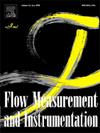Application of ResNet and Autoencoder models for anomaly detection in wastewater networks data: A Comparative study of supervised and unsupervised approaches
IF 2.3
3区 工程技术
Q2 ENGINEERING, MECHANICAL
引用次数: 0
Abstract
Artificial intelligence (AI) enhances data validation for urban wastewater networks by addressing inaccuracies in sensor-generated data from harsh environments. Traditional manual validation methods are labor-intensive and prone to human error, necessitating automated solutions. The performance of two AI-driven models— a supervised ResNet model and an unsupervised Autoencoder—was compared on turbidity data issued from an urban wastewater network. The ResNet model showed improved accuracy when the classification threshold was optimized using the Precison-Recall curve but required rigorous data validation to manage learning bias and class imbalance. The Autoencoder achieved an F1 score of 0.96, demonstrating its efficacy in detecting anomalies when trained on valid data sequences. Hence, AI models significantly reduce the workload of manual data validation, enhance the reliability of water management systems, and allow stakeholders to focus on more critical tasks.
ResNet和Autoencoder模型在污水管网数据异常检测中的应用:有监督和无监督方法的比较研究
人工智能(AI)通过解决恶劣环境中传感器生成数据的不准确性,增强了城市污水管网的数据验证。传统的手动验证方法是劳动密集型的,容易出现人为错误,因此需要自动化解决方案。在城市污水网络发布的浊度数据上,比较了两个人工智能驱动模型(有监督的ResNet模型和无监督的autoencoder模型)的性能。当使用precision - recall曲线优化分类阈值时,ResNet模型显示出更高的准确率,但需要严格的数据验证来管理学习偏差和类别不平衡。Autoencoder获得了0.96的F1分数,证明了它在有效数据序列上训练时检测异常的有效性。因此,人工智能模型大大减少了人工数据验证的工作量,提高了水管理系统的可靠性,并使利益相关者能够专注于更关键的任务。
本文章由计算机程序翻译,如有差异,请以英文原文为准。
求助全文
约1分钟内获得全文
求助全文
来源期刊

Flow Measurement and Instrumentation
工程技术-工程:机械
CiteScore
4.30
自引率
13.60%
发文量
123
审稿时长
6 months
期刊介绍:
Flow Measurement and Instrumentation is dedicated to disseminating the latest research results on all aspects of flow measurement, in both closed conduits and open channels. The design of flow measurement systems involves a wide variety of multidisciplinary activities including modelling the flow sensor, the fluid flow and the sensor/fluid interactions through the use of computation techniques; the development of advanced transducer systems and their associated signal processing and the laboratory and field assessment of the overall system under ideal and disturbed conditions.
FMI is the essential forum for critical information exchange, and contributions are particularly encouraged in the following areas of interest:
Modelling: the application of mathematical and computational modelling to the interaction of fluid dynamics with flowmeters, including flowmeter behaviour, improved flowmeter design and installation problems. Application of CAD/CAE techniques to flowmeter modelling are eligible.
Design and development: the detailed design of the flowmeter head and/or signal processing aspects of novel flowmeters. Emphasis is given to papers identifying new sensor configurations, multisensor flow measurement systems, non-intrusive flow metering techniques and the application of microelectronic techniques in smart or intelligent systems.
Calibration techniques: including descriptions of new or existing calibration facilities and techniques, calibration data from different flowmeter types, and calibration intercomparison data from different laboratories.
Installation effect data: dealing with the effects of non-ideal flow conditions on flowmeters. Papers combining a theoretical understanding of flowmeter behaviour with experimental work are particularly welcome.
 求助内容:
求助内容: 应助结果提醒方式:
应助结果提醒方式:


